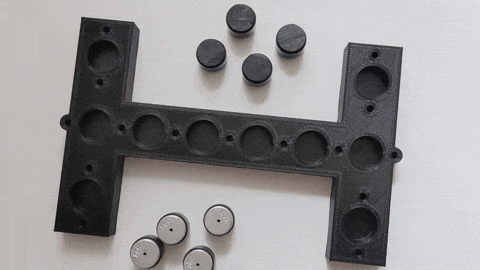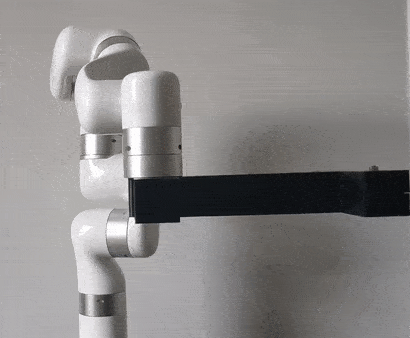Inertial Identification with Cobots
Enabling Cobots to Rapidly Understand the Objects They Manipulate
From our paper:
Fast Object Inertial Parameter Identification for Collaborative Robots
By Philippe Nadeau, Matthew Giamou and Jonathan Kelly
In IEEE International Conference on Robotics and Automation (ICRA) 2022
🔗 Paper link
Enabling Cobots to Rapidly Understand the Objects They Manipulate
Collaborative robots (cobots) must understand the physical properties of objects they manipulate (mass, center of mass, and moments of inertia) to safely and efficiently plan grasps and motions. Traditional methods for identifying these parameters require fast, dynamic motions to overcome sensor noise, but cobots operate at reduced speeds for safety, leading to low signal quality and poor estimation accuracy.
Our work bridges this gap by introducing a novel method that adapts to motion constraints, improving both speed and accuracy of inertial parameter estimation, making it practical for real-world cobot applications.
How It Works
Force-torque sensors, commonly located at the wrist of a robotic arm, measure forces and torques exerted on the manipulated object. These measurements, combined with the robot’s motion data, allow us to infer the object’s inertial parameters. However, cobots have motion constraints that reduce signal quality, making standard approaches ineffective.
Our method adapts dynamically to the quality of the sensor data:
- At slow speeds (where motion-induced forces are weak), the method assumes the object’s weight dominates and simplifies the dynamics equations to reduce noise sensitivity.
- As motion becomes faster, it gradually shifts to using the full Newton-Euler equations for a more complete parameter estimation.
- A discretized object model—using point masses positioned according to shape data—ensures that inferred parameters remain physically consistent and realistic.
Key Benefits
- Faster and more accurate inertial parameter estimation even under cobot speed constraints.
- Improves grasping and motion planning by giving cobots better predictive capabilities.
- Physically consistent and robust results demonstrated in both simulations and real-world experiments on a low-cost cobot arm.
Experiments
To validate our approach, we conducted extensive simulations and real-world experiments using a modular test object with configurable mass distributions. The object consists of a 3D-printed frame with interchangeable weights, allowing us to precisely control its inertial parameters and compare identification accuracy across different configurations. Our test object can be reproduced easily by following the instructions in this Github repository.

We evaluated our method on a uFactory xArm 7 robotic arm equipped with a Robotiq FT-300 force-torque sensor. The robot followed a carefully designed safe identification trajectory, ensuring that the object’s motion remained within cobot safety limits while still generating informative force-torque data.

Our results demonstrate that the proposed algorithm achieves accurate and physically consistent inertial parameter identification, even under the low-speed constraints typical of cobots. The method successfully balances safety, speed, and accuracy, making real-time inertial parameter estimation feasible for collaborative robotic manipulation.
If you are interested in learning more about our work, you can find the full paper here, contact me directly, or watch this three-minute presentation of the work: